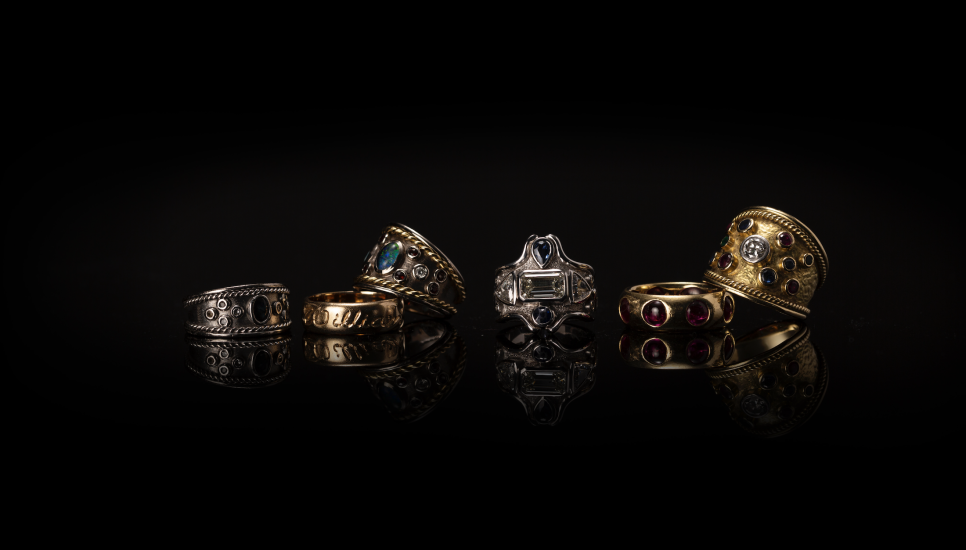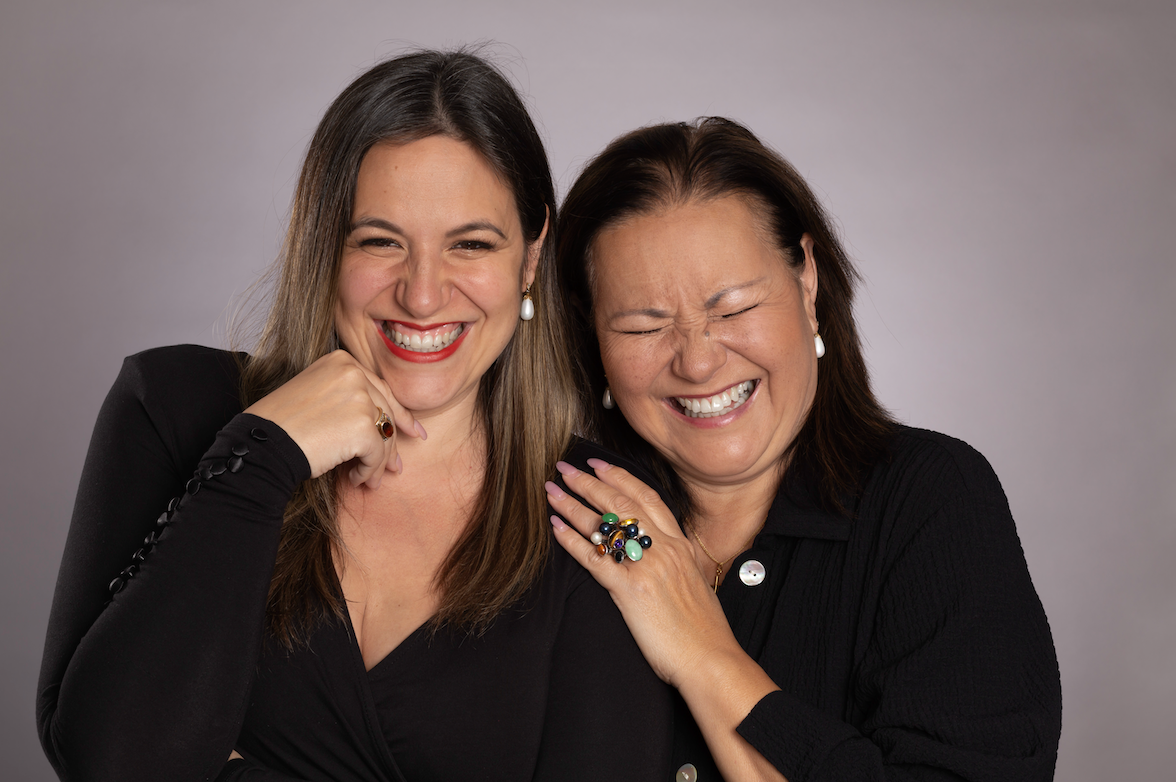The legacy of jewellery

After a career working with family businesses, it was the Covid-19 pandemic that inspired Anita Brightley-Hodges to found her own family business – the jewellery business Irene & Jenny – with her daughter Amalia Brightley-Gillott.
This was a fortuitous move at a time when much other business had closed down and it fitted in with her original passion for jewellery. She had studied jewellery at art school.
Named after Amalia’s grandmothers, much like many families, the company is focused on legacy. The idea is deceptively simple. It transforms forgotten family jewellery into new pieces that can be passed on to future generations.
Here, Anita and Amalia talk about the business, why heritage is important and how they help legacy.
How did the business come about?
Amalia Brightley-Gillott: The business started because my grandmother had left my mother her jewellery box. None of it was really to my taste but you would never dream of throwing away. Instead, mom designed a set of rings using the original jewellery – in fact, one became my wedding ring. I think my grandmother would be tickled my grandmother that I’m wearing her stuff.
After that, someone said to us that they had a box of family jewellery and asked us to do it for them. Over the years now we have probably worked on around 25-30 pieces of jewellery.
We launched around 18 months ago and we only make jewellery from old family heirloom jewellery. Every single piece is designed for you, using your existing jewellery.
How does the design process work?
Amalia Brightley-Gillott: When we start the journey with a client, we sit down and have a design consultation with them to talk about their jewellery. People just like talking about their family, especially about those who aren’t here anymore. It’s very therapeutic for lots of people. Then we look into their style, their tastes and so on. Are they into elaborate, over-the-top jewellery? Do they only wear yellow gold? What is their style? In particular, we ask which pieces are significant to them because those gemstones will play a central role in the new piece that we create. After the design consultation, we then come up with three completely unique concepts.
How does this work in practice?
Amalia Brightley-Gillott: If it’s a ring, my mother will come up with three completely different designs. These may be inspired by sea creatures, architecture, fashion or indeed anything, but it really is dictated by the gemstones. It is worth mentioning that we are not starting with a completely blank canvas because we have the gemstones to work around.
After the design has come together, these are turned into hyperrealistic computer designs (CADs) that look like photos. We don’t do anything with it until the clients have signed off the computer designs. There is such an element of trust here. People are giving us their family heirlooms and it needs more than a quick sketch.
Working with designs this realistic means that there is no guesswork involved. It means that clients can ask us to add another sapphire, for example, or see what the design might look like in rose gold. When they are completely happy with the design, our craftsmen then start to work – they take out the gemstones and melt down the gold from the existing jewellery.
People sometimes feel guilty changing their mother’s brooch or something that has been like that in the family for generations. I tell them that those stories are still sitting behind a safe door somewhere. What we are doing is breathing life into them and helping them sing.

Do you find people want to do something traditional or something that’s more appropriate to be worn today?
Anita Brightley-Hodges: Our clients tend not to be shrinking violets and their stones tend to be large pieces like a bracelet or a necklace. They are a statement, so they wouldn’t commission us if they didn’t want that. Typically when they come to me with their jewellery, they often have a number of children. What I then do is design a suite of items for the family with a similar design flavour which could be cufflinks, rings or earrings to make sure that there is a fair distribution of wealth.
Amalia Brightley-Gillott: I met a lady last week who said that she had wanted to ask us to work with her mother’s jewellery, but she didn’t think it would be fair to her sister as they had such radically different tastes – she said that she likes over-the-top jewellery while her sister doesn’t. I suggested that we make two pieces: one that is over-the-top and the other that is small and petite. I also mentioned that we could engrave her mother’s name on the inside. That means that although there will be differences in the design, they are clearly from the same set of jewellery.
Jewellery is just a vehicle for bringing those stories to life. Every piece we make comes with a bespoke book telling the story of the family, where the jewellery came from, and the design process. The next generation will know where it came from.
By definition, what you do is completely sustainable, isn’t it?
Amalia Brightley-Gillott: We are repurposing something which has existed for generations. We are not mining new gemstones and we’re not shipping metals around the world. Our supply chain is zero and there is very little wastage because anything that we don’t use, we can scrap and take that off the final price of the product. The entire circle is literally contained in what you’ve already got. For us, it’s about going on a beautiful journey with our clients and then doing something for them that makes them feel a million dollars. It often coincides – particularly for women – with an “event” birthday or a special wedding anniversary. We are the antithesis of fast throwaway fashion.
Anita Brightley-Hodges: I have made some pieces of jewellery for ladies who have been divorced by repurposing jewellery from a first marriage into a new, fashionable piece. When two families come together, they often have pieces from both families that they’d like to be integrated into a single piece. There are many different stories of relationships that come out of marriages or relationships or descendants. We are trying to make sure that those stories don’t vanish.
Who are your clients?
Amalia Brightley-Gillott: The organic nature of our business means that our clients were initially in the UK and Europe to begin with. But it has grown. I speak to a lot of people around the world because social networking sites like Instagram have just the world so much more accessible.
Anita Brightley-Hodges: Different cultures have different ways of passing their legacies down. But the thing is that every woman on the planet wants a bit of bling. We’re hoping to build a business that is that is ethical, sustainable, original, and also authentic.






